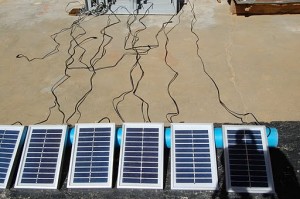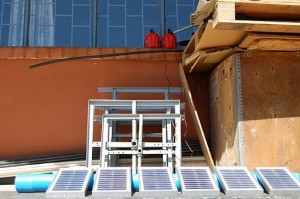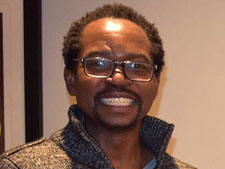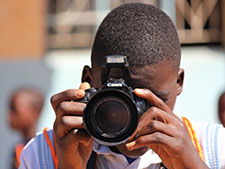I couldn’t wait to get on the plane. There’s something alluring about the feeling of knowing what the hell I’m getting myself into. I had made two trips to India to distribute solar lanterns and by most measures, they had been a success. So going to a developing country to do solar wasn’t entirely new to me but there were some significant differences: this was Africa, and I wasn’t distributing previously manufactured products; I was going to build a roof mounted solar photo-voltaic (PV) system. I am neither an electrician nor an engineer, so I may have bitten off a bit more than I could chew.
distributing previously manufactured products; I was going to build a roof mounted solar photo-voltaic (PV) system. I am neither an electrician nor an engineer, so I may have bitten off a bit more than I could chew.
I did have a few things going for me though: I am partnering with Dwankhozi Hope, a non-profit organization founded by Matt MacLean and his wife, Beth. Matt is a college friend of mine, and when I decided to do a project in Africa and looking for an organization that had already established relationships with the people we wanted to help, Dwankhozi Hope was the obvious choice. Matt introduced me to Moses, who lives in the capital city of Lusaka but whose family owns a farm near Chipata, has been invaluable in helping with logistics and designing the solar system. It also helps that he’s an engineer and runs a construction company.
We spent the day procuring the rest of the equipment that we weren’t able check as luggage on the flight here. Goerte, a nice Dutch woman who runs the preeminent solar distributor in Lusaka, provided solar expertise when it comes to batteries, wiring, inverters, and solar panels. These systems are a little more complicated than I originally expected.
 It’s Friday evening now, and I’ve been here 2 nights. Tomorrow I depart along the Great Eastern Road to Chipata, a 400 hundred mile drive across the country. I’m riding with Moses and my friend Erik, who is accompanying me on this trip. Erik too has experience in electricity and has provided a lot of input this novice would have otherwise not considered.
It’s Friday evening now, and I’ve been here 2 nights. Tomorrow I depart along the Great Eastern Road to Chipata, a 400 hundred mile drive across the country. I’m riding with Moses and my friend Erik, who is accompanying me on this trip. Erik too has experience in electricity and has provided a lot of input this novice would have otherwise not considered.
My introduction to Zambia (and since it’s my first time, to Africa in general), has been surprisingly easy. The area in Lusaka where we’re staying is quite clean and there’s a mall across the street that has a hardware store, restaurants (including a Subway!) and just about anything else you would expect in a recently developed shopping center. Erik and I have been quite surprised at how little Lusaka seems like a developing country. Something tells me that’s about to change tomorrow morning.
We’ve got all the equipment. The logistics have been handled (without issue, I might add), and all we have left is to actually do the work. Can’t wait to get going…
Jeff Olshesky





[…] As I mentioned before, I’m neither an engineer nor an electrician. So before the actual trip, I made a mock-up system at my parent’s home with the help of my dad and Erik, both much more familiar with the movement of electrons across wires. The premise was simple: a solar panel charges a battery during the day and the lights run of the power stored in the battery at night. But we had to incorporate a charge controller that maintains a constant voltage from the panels to the battery (if the voltage drops significantly, say, from a cloud in the sky reducing the sunlight hitting the panel, the battery may be damaged). Then we needed to add a voltmeter to the circuit to know the remaining power left in the battery (they’re never supposed to go below 50% charge). We also wanted a fuse to protect the circuit in case there was a short. We wanted to make sure the circuit was wired so that if one light went out, the rest still worked. Finally there was the sizing: we had to consider battery size, charge controller size, inverter size (for the AC system built to charge the laptops), wire size, and panel size. It was truly a crash course in electricity. […]